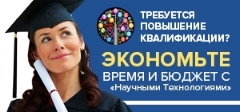| |
The presented work is devoted to the analysis of the figurative content of one of the oldest and at the same time difficult to study genre – folk riddle. The descriptive part of the denotation is analyzed, within which it is possible to enter the second nomination of the hidden object or its allegorical representation. Allegory, as a rule, is realized by including a metaphor in the context. It should be emphasized that in a folk riddle, the functioning of a metaphor differs significantly from the functioning of a metaphor in a literary text. The article examines the role of anthropomorphic metaphor in the text of the Russian folk riddle. The authors provide psychological grounds for the fact that an inanimate object is often described as animate under the general influence of perception of the surrounding world as animate. Upon a detailed examination of the descriptive part of the riddle, the authors come to the conclusion that often a metaphor is realized by means of a verb and often is transformed into means of indicating the presence of an object in some place or activation at a strictly set time. In addition, often with the help of an anthropomorphic metaphor, the interaction of several objects is emphasized, and the interaction can be either active, that is, assuming the actual performance of actions, or nominal, which implies only the close finding of two hidden objects. The inclusion of an anthropomorphic metaphor makes it possible to introduce hierarchy relations into the description: this is vividly illustrated by the riddles of both smoke and fire, where, thanks to the secondary nomination of denotations, a violation of the logic of fixing events is achieved. In general, the authors emphasize that the anthropomorphic metaphor develops a new perspective of its realization within the framework of the riddle, which is entirely determined by the tasks of the genre.
Keywords:folklore, folk riddle, denotation, metaphor, anthropomorphism
|






